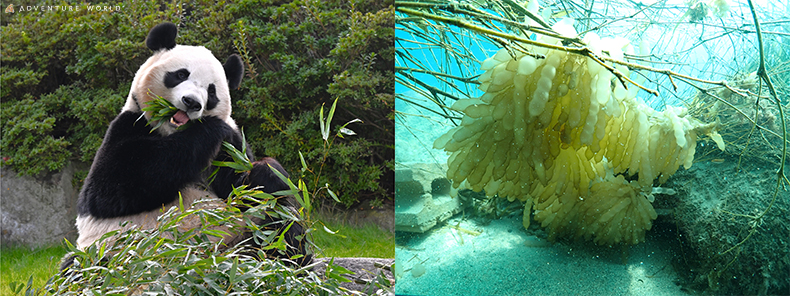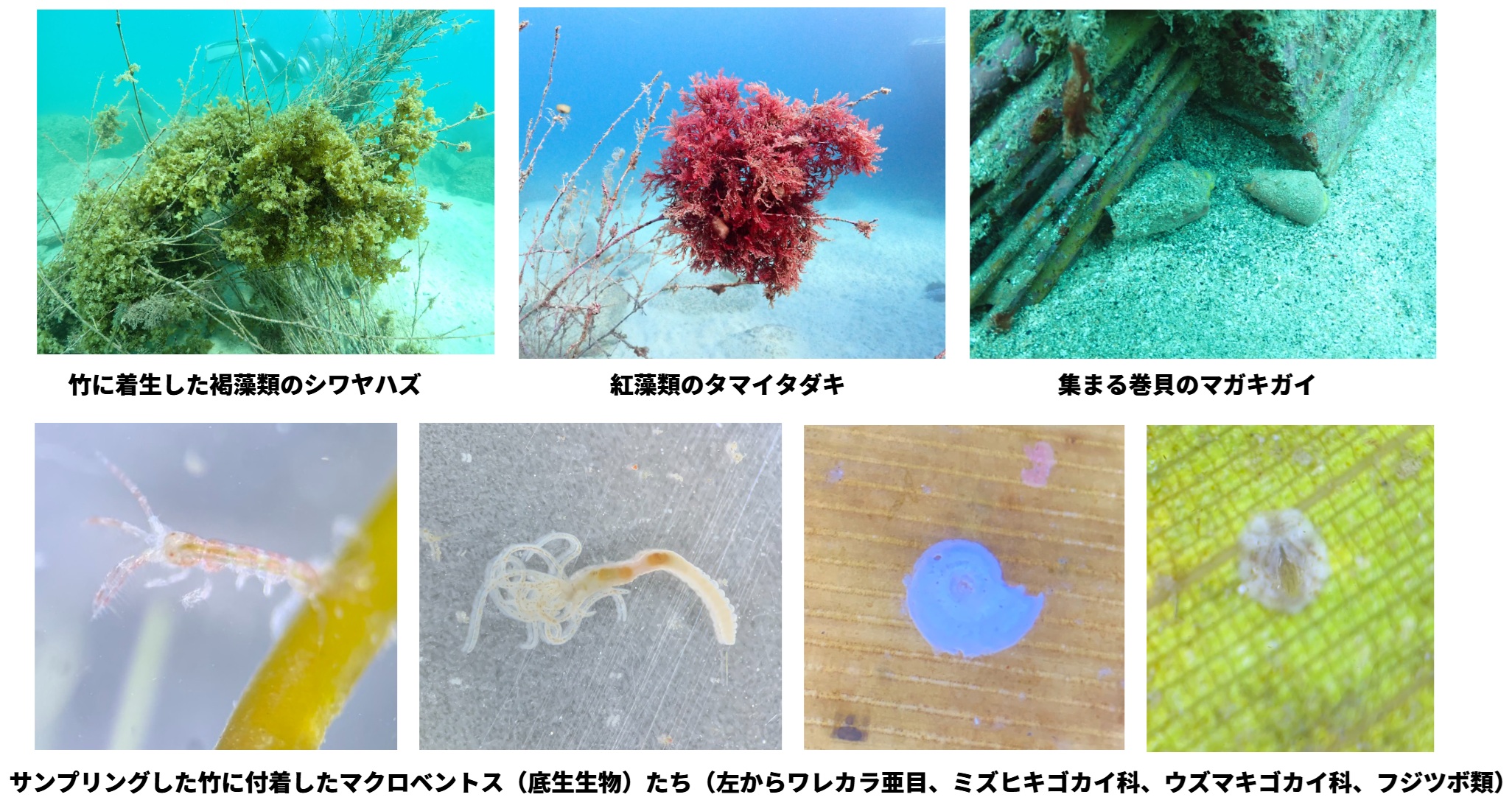“パンダバンブープロジェクト”パンダの食べ残した竹を「アオリイカ産卵床」として活用!3年目に見えてきた沿岸生態系への貢献

アドベンチャーワールドは、沿岸生態系の回復を目的に、パンダが食べ残した竹を活用し、アオリイカが卵を産む場所をつくる取り組みを2022年から続けています。本活動では、パンダが食べ残した竹を束ねて海底に設置し、減少する海藻に代わる産卵場所を提供することで、アオリイカの産卵環境を確保するとともに、沿岸の生物多様性の向上を目指しています。2024年度の活動では、計64基の竹製産卵床を白浜町日置川エリア「伊古木漁港」に設置し、その大半の産卵床にアオリイカの産卵が確認されました。さらに、竹の表面には海藻や小型の動物が付着し、生物が増える基盤としての可能性も示されました。本活動の成果と今後の展望について報告いたします。
【活動の背景】
近年、海水温の上昇や藻類を食べる生物の分布拡大により白浜の海の生態系が変化し、アオリイカの産卵場所となる海藻類が減少しています。一方、里山では放置竹林の増加が問題となっており、適切な管理が求められています。アドベンチャーワールドでは、こうした竹を伐採してパンダの食事として活用してきましたが、パンダは竹の新鮮な枝葉の一部しか食べず、幹や摂餌後の枝葉は大量に残ります。そこで、食べ残した竹を束ねて海底に沈めることで、アオリイカの産卵床や小型生物の生育基盤として活用する取り組みを2022年より開始しました。この活動は、自然環境の保全と地域社会の連携を強化するプロジェクトとして、継続的に進めています。
【2024年度シーズンの活動概要】
設置期間 :2024年6月26日~11月9日
設置場所 :白浜町日置川エリア「伊古木漁港」
設置基数 :合計64基
共催 :白浜町
協力 :京都大学瀬戸臨海実験所・白浜水族館、小出渡船、ダイビングセンター「エルマール」、和歌山南漁業協同組合 ほか
主な取組:
①パンダの食べ残した竹(孟宗竹、矢竹)を活用したアオリイカ産卵床の設置
・海藻が減少した白浜の海に、竹を使ったアオリイカの産卵場所を64基設置
・設置後、7月から11月にかけて、定期的に潜水調査及び竹のサンプリングを実施
②地域の中学生が参加する環境学習プログラムの実施
・日置中学校の生徒21名が産卵床の制作・設置に参加し、海洋環境について学ぶ
③京都大学白浜水族館でアオリイカの卵を展示し、孵化の様子を公開
・産卵床から採集した卵を展示し、孵化の過程を一般公開
・孵化後の稚イカを海へ放流
④竹の葉や枝に付着する生物の調査
・竹に着生する藻類や小型生物の種類と数を記録し、生態系への影響を分析
【活動の成果】
①アオリイカの産卵成功と孵化
・設置した64基の大半にアオリイカの産卵を確認
・京都大学白浜水族館で展示した卵から、2,641匹の稚イカが孵化し、放流

②沿岸生態系への貢献
・竹に着生した海藻類
シワヤハズ、タマイタダキなどの海藻類が確認され、海藻の成長基盤となることを確認
・付着生物
甲殻類(ワレカラ、フジツボ)、ゴカイ類、巻貝類の卵塊などが竹に付着していることを確認
・生態系の回復の兆し
海藻の増加 → 小型生物の生息数増加 → 生物多様性の向上が期待される

③普及活動の成果
・京都大学白浜水族館での展示期間中、19,281人が来館し、多くの方が活動に触れる機会に
・日置中学校の生徒が参加し、沿岸環境への理解を深める機会に
【今後の展望】
近年の研究では、磯焼けの原因とされる藻類食性魚類の稚魚をアオリイカが捕食することが報告されています。アオリイカの産卵が確認されたことで、将来的にはこの生態系のつながりが作用し、海藻の減少を抑える一助となる可能性も考えられます。また、竹が海中で徐々に分解される過程で、その堆積物を餌とする巻貝が集まっている様子も確認されました。これにより、竹が小型の生物の一時的な生息基盤として機能するだけでなく、分解された有機物が、海の栄養循環にも影響を与える可能性が考えられます。今後も調査を続け、竹を活用した生態系回復の可能性をさらに探求していきます。また、地域住民や漁業関係者との連携を深め、里山と里海をつなぐ新たな環境保全モデルの確立を目指してまいります。
【パンダバンブープロジェクトについて】
里山を荒廃させる竹を伐採し、ジャイアントパンダの食事として活用することで里山の環境を守り、これまで廃棄していたジャイアントパンダが食べない竹の幹の部分や食べ残した竹、糞を有効資源としてアップサイクルを推進するプロジェクトです。

